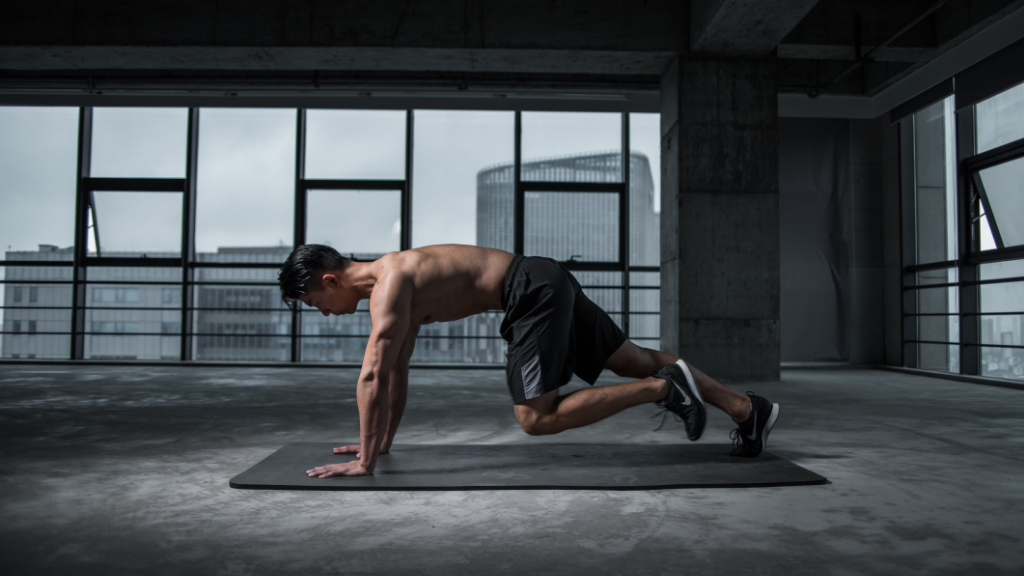
Does Working Out Make You Taller?
|
|
Time to read 4 min
You’ve probably heard someone say, “Hit the gym—it’ll make you grow taller!” It’s the kind of advice that sticks, passed down by friends, gym enthusiasts, or even the occasional internet guru. But how true is it?
Height can feel like a mystery, with so many factors at play. The idea of controlling it through exercise is a hopeful one—but does working out really influence how tall you become? Keep reading and find out.
The Role of Physical Activity in Supporting Growth
According to Kohl and Cook (2013), physical activity plays a vital role in promoting overall growth and development during childhood and adolescence [₁]. Regular exercise supports bone density and strength [₂] by stimulating the release of growth-promoting hormones and encouraging the absorption of essential nutrients like calcium. Activities such as running, jumping, and weight-bearing exercises help bones adapt to physical demands, ensuring they develop resilience and durability as the body grows.
Exercise also contributes to better posture [₃], which can make a difference in how tall someone appears. Strengthening core muscles and improving flexibility can lead to better spinal alignment, preventing the slouching that might make someone seem shorter. While exercise doesn’t directly alter genetic height potential, its impact on maintaining a strong, healthy body ensures that growth isn’t hindered by avoidable factors like poor bone health or weak posture.
Can Specific Workouts Influence Height?
Certain exercises, such as stretching routines and yoga, are often associated with improving posture and creating a taller appearance. These workouts focus on reducing tension in muscles and joints [₄], allowing the body to stand straighter. While they can’t change bone length or alter genetic height potential, they may help individuals maximize their natural stature by encouraging proper spinal alignment.
High-impact sports like basketball or activities like swimming are sometimes linked to height due to their dynamic movements. These exercises don’t directly cause a person to grow taller [₅], but they do promote physical fitness, which is essential for healthy growth during developmental years. Their benefits lie in building strength, flexibility, and coordination, which can complement other growth-supporting factors in a balanced lifestyle.
Growth Factors Beyond Exercise
While exercise is an important component of a healthy lifestyle, growth is influenced by a variety of other factors that go far beyond physical activity. These are some of the factors that can impact growth:
1. Genetics:
Genetics plays the most significant role in determining height [₆], as it establishes a person’s natural growth potential. If tall parents run in the family, chances are that their children will have a similar height advantage, regardless of external factors.

2. Nutrition:
Nutrition is a critical part of health and development (World Health Organization) [₇]. A well-balanced diet that includes essential nutrients such as protein, calcium, and vitamin D is vital for bone development and overall health [₈]. Poor eating habits or nutrient deficiencies during key growth years can hinder development (Kiani et al., 2022) [₉], even if a person stays physically active.

3. Sleep:
During deep sleep, the body releases growth hormones and undergoes cellular repair [₁₀], both of which are essential for healthy development. Inadequate sleep, especially during key growth phases, can limit the body’s ability to reach its full potential, highlighting the importance of maintaining consistent and quality rest.

Together, these factors emphasize that growth is a holistic process. Exercise plays its role, but without proper nutrition, sleep, and overall lifestyle balance, its effects alone wouldn’t be enough to maximize growth potential.
Conclusion
So, does working out make you taller? The answer is no, not directly. Exercise cannot change your genetic height potential or physically lengthen your bones. However, it plays a significant role in supporting overall growth and development, especially during the formative years.
Workouts that improve posture, strengthen muscles, and promote flexibility can help you stand taller and maximize your natural height. Combined with proper nutrition, quality sleep, and a balanced lifestyle, exercise contributes to creating the ideal conditions for a healthy and well-developed body. While it may not add extra inches, staying active ensures you’re giving your body the best chance to reach its full potential.
References:
[₁] Committee on Physical Activity and Physical Education in the School Environment; Food and Nutrition Board; Institute of Medicine; Kohl HW III, Cook HD, editors. Educating the Student Body: Taking Physical Activity and Physical Education to School. Washington (DC): National Academies Press (US); 2013 Oct 30. 3, Physical Activity and Physical Education: Relationship to Growth, Development, and Health. Available from: https://www.ncbi.nlm.nih.gov/books/NBK201497/
[₂] American Academy of Orthopaedic Surgeons. (n.d.). Exercise and bone health. Retrieved January 8, 2025, from https://orthoinfo.aaos.org/en/staying-healthy/exercise-and-bone-health
[₃] Kim D, Cho M, Park Y, Yang Y. Effect of an exercise program for posture correction on musculoskeletal pain. J Phys Ther Sci. 2015 Jun;27(6):1791-4. doi: 10.1589/jpts.27.1791. Epub 2015 Jun 30. PMID: 26180322; PMCID: PMC4499985.
[₄] Arthritis Foundation. (n.d.). Tension-relieving stretches. Retrieved January 8, 2025, from https://www.arthritis.org/health-wellness/healthy-living/physical-activity/other-activities/tension-relieving-stretches
[₅] Healthline. (n.d.). Does basketball make you taller? We found out. Retrieved January 8, 2025, from https://www.healthline.com/health/fitness/does-basketball-make-you-taller
[₆] Medical News Today. (n.d.). What to know about calcium. Retrieved January 8, 2025, from https://www.medicalnewstoday.com/articles/327514
[₇] World Health Organization. (n.d.). Nutrition. Retrieved January 8, 2025, from https://www.who.int/health-topics/nutrition#tab=tab_1
[₈] Harvard Health Publishing. (n.d.). Essential nutrients your body needs for building bone. Retrieved January 8, 2025, from https://www.health.harvard.edu/staying-healthy/essential-nutrients-your-body-needs-for-building-bone
[₉] Kiani AK, Dhuli K, Donato K, Aquilanti B, Velluti V, Matera G, Iaconelli A, Connelly ST, Bellinato F, Gisondi P, Bertelli M. Main nutritional deficiencies. J Prev Med Hyg. 2022 Oct 17;63(2 Suppl 3):E93-E101. doi: 10.15167/2421-4248/jpmh2022.63.2S3.2752. PMID: 36479498; PMCID: PMC9710417.
[₁₀] Institute of Medicine (US) Committee on Sleep Medicine and Research; Colten HR, Altevogt BM, editors. Sleep Disorders and Sleep Deprivation: An Unmet Public Health Problem. Washington (DC): National Academies Press (US); 2006. 2, Sleep Physiology. Available from: https://www.ncbi.nlm.nih.gov/books/NBK19956/



